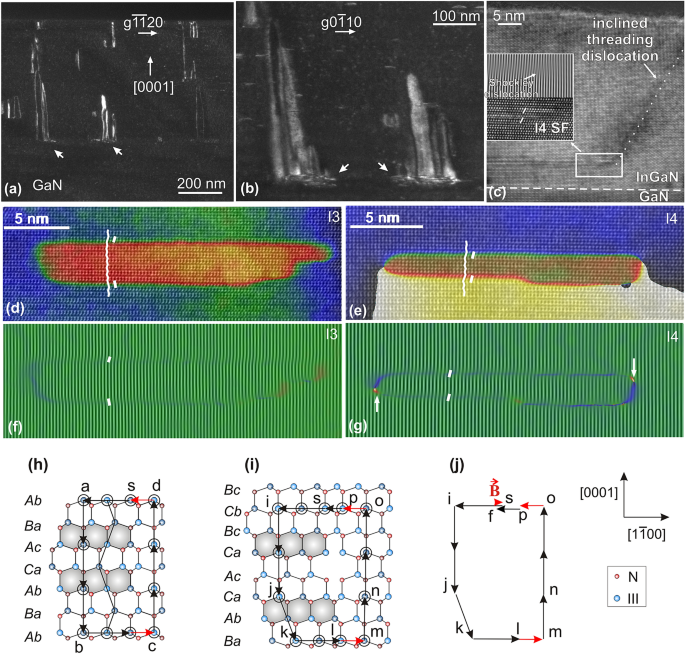We reach more than 65,000 registered users in Dec!! Register Now

The heterogeneous nucleation of threading dislocations on partial dislocations in III-nitride epilayers
- October 20, 2020
- 77 Views
- 0 Likes
- 0 Comment
III-nitride compound semiconductors are breakthrough materials regarding device applications. However, their heterostructures suffer from very high threading dislocation (TD) densities that impair several aspects of their performance. The physical mechanisms leading to TD nucleation in these materials are still not fully elucidated. An overlooked but apparently important mechanism is their heterogeneous nucleation on domains of basal stacking faults (BSFs). Based on experimental observations by transmission electron microscopy, we present a concise model of this phenomenon occurring in III-nitride alloy heterostructures. Such domains comprise overlapping intrinsic I1 BSFs with parallel translation vectors. Overlapping of two BSFs annihilates most of the local elastic strain of their delimiting partial dislocations. What remains combines to yield partial dislocations that are always of screw character. As a result, TD nucleation becomes geometrically necessary, as well as energetically favorable, due to the coexistence of crystallographically equivalent prismatic facets surrounding the BSF domain. The presented model explains all observed BSF domain morphologies, and constitutes a physical mechanism that provides insight regarding dislocation nucleation in wurtzite-structured alloy epilayers.
Cite This Article as
No tags found for this post









